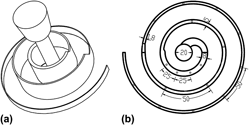Article contents
Effects of boron and zirconium additions on the fluidity, microstructure and mechanical properties of IN718C superalloy
Published online by Cambridge University Press: 21 October 2016
Abstract

The effects of boron and zirconium contents from 0 to 0.049 wt% on the casting fluidity, as-cast microstructure and mechanical properties of IN718C superalloy are systematically investigated. The results show that as the B or Zr content increases, the fluidity firstly increases and then decreases. The optimum fluidity is obtained at the pouring temperature of 1470 °C when the content of B is 0.0059 wt% or Zr is 0.042 wt%, respectively. The addition of Zr can lead to the formation of blocky laves phase, but B has no influence on microstructure morphology. Furthermore, the addition of B or Zr can effectively improve the tensile and stress life properties as well as casting fluidity of IN718C superalloy. As compared with IN718C master alloys, the tensile strength can increase 6.2–8.6% and stress life can be improved by 1.3 times when B content is 0.0059 wt%. In addition, when the alloy contains 0.042 wt% Zr, the tensile strength can increase 5.6–7% and stress life can increase 1.076 times than that of the master alloy.
- Type
- Articles
- Information
- Copyright
- Copyright © Materials Research Society 2016
References
REFERENCES
- 6
- Cited by





